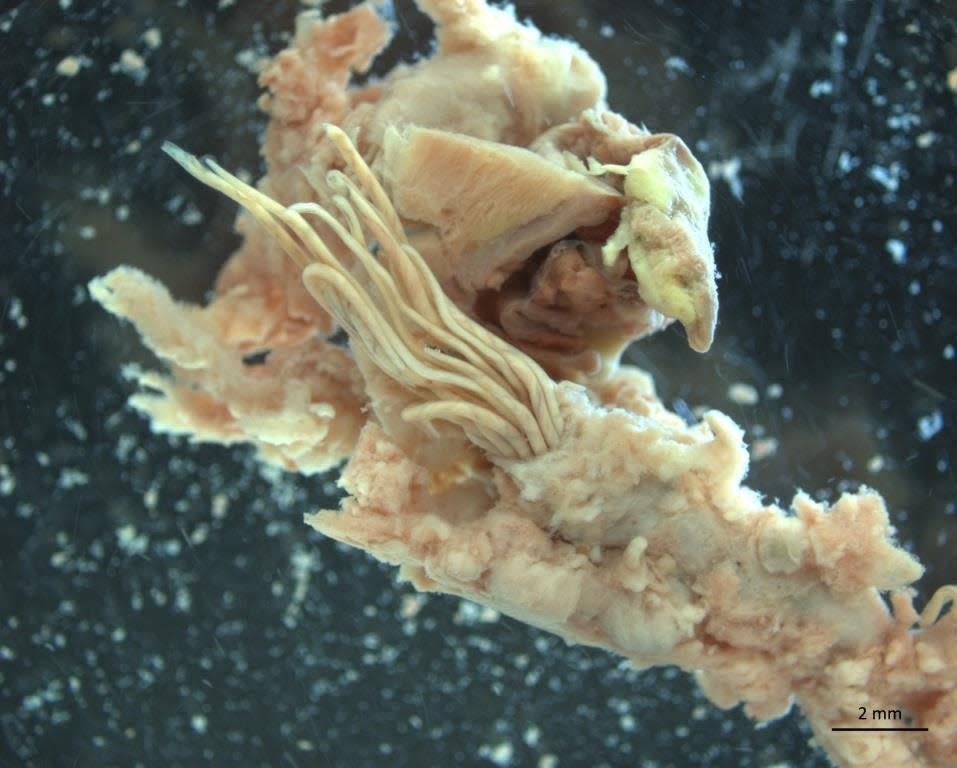Four cases of rat lungworm have been identified in Georgia. Here's what to know

Georgia has a new disease to keep an eye on. Angiostrongylus cantonensis, colloquially called "rat lungworm," is generally prevalent in Southeast Asia and tropical Pacific islands, according to the CDC. However, distribution has been increasing over time time and infections have been identified in other areas including Africa, the Caribbean, and the US.
Now, a new study has confirmed cases of the parasitic disease in multiple southeast cities, including Atlanta. Here's a closer look at what this disease is, how many local cases have been confirmed, how serious this disease is and what can be done to prevent its spread:
Unsafe workplace: Feds could fine Augusta battery factory for supposedly unsafe workplace levels of lead
Shark Tank: Athens soap company to be on Shark Tank, named a finalist in competition for $1 million
What is rat lungworm?
As its name would indicate, rat lungworm is a parasitic worm found in rats. Fair warning: This is not where the grossness stops. The adult form of the parasite is only found in rodents, and those infected pass the worm's larvae in their feces. Snails and slugs can become infected after ingesting the feces. The larvae mature in snails and slugs but don't become adults until after rats have eaten the infected snails or slugs.
Other animals that can become infected and serve as transport hosts include freshwater shrimp, land crabs, frogs, armadillos, opossum, and certain planarians (flatworms). Fish do not spread the parasite.
How many cases of rat lungworm are in Georgia?
According to the new study, tissue samples were collected from 33 wild brown rats found dead between 2019 and 2022 in Atlanta. Seven were found with nematodes (worms) in the heart, pulmonary artery, and brain tissues. Of the seven, four were molecularly confirmed as cases of Angiostrongylus cantonensis. The other three could not be definitely confirmed due to insufficient sample quality and DNA degradation, but their nematodes were consistent with rat lungworm.
However, there may be more cases that have not been identified yet. It's likely that Georgia has been home to the parasite since much earlier than 2019 as prior cases were found in neighboring states.
This study was conducted by several biological experts across the southeast, including those at the University of Georgia and Zoo Atlanta.
Can people become infected by rat lungworm?
Humans can become infected with rat lungworm by eating raw or undercooked animals that are hosting the parasite (snails, shrimp, crabs, etc.). They can also become infected by eating raw produce if the produce has any traces of the infected host animal.
However, an infected human cannot pass the disease to another human.
More than 2,800 lifetime-cases have been reported from a total of 30 countries. Outbreaks have involved a few people to hundreds at a time.
What does a rat lungworm infection look like and how serious can it be?
Some infected people don’t have any symptoms or have only mild symptoms that don’t last very long. Sometimes the infection causes a rare type of meningitis called eosinophilic meningitis. The symptoms can include headache, stiff neck, tingling or painful feelings in the skin, low-grade fever, nausea, and vomiting. Serious complications can rarely occur, leading to neurologic dysfunction or death.
In Hawaii, where rat lungworm is more prevalent, 82 cases were reported between 2007 and 2017, of which 65 were hospitalized and two died, according to a study from the American Journal of Tropical Medicine and Hygiene.
Retirement recommendation: Savannah makes list of top places to retire in the South, with praise for its arts & culture
Augusta Literacy Leaders: More than 150 Georgia schools recognized as 'Literacy Leaders,' five in Augusta area
What can be done to prevent and treat rat lungworm?
The CDC recommends safely removing snails, slugs, and rats found near homes and gardens. Residents should also thoroughly wash hands and utensils after preparing raw food that could serve as a host.
There is no specific treatment. However, most infections resolve themselves overtime without treatment because rat lungworm cannot survive for long in the human body. Nevertheless, those showing symptoms should consult their healthcare provider for more information.
This article originally appeared on Augusta Chronicle: Rat lungworm in Georgia, info on cases, symptoms, severity, treatment

